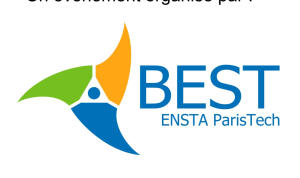In an era increasingly dominated by fleeting digital interactions, the enduring appeal of physical books and the tangible charm of stationery continue to captivate hearts and minds globally. The Books & Stationery market, far from being a relic of the past, is a vibrant, evolving sector brimming with opportunities for businesses that understand its unique dynamics. From independent bookstores to massive online retailers, from artisanal stationery boutiques to office supply giants, the landscape is diverse, rich, and remarkably resilient. This comprehensive guide delves into the nuances of sales and transactions within this fascinating market, offering insights into optimizing your strategy for today’s discerning consumer and maximizing your visibility on platforms like Google.
The Enduring Allure: Why Books & Stationery Remain Relevant
Before dissecting sales strategies, it’s crucial to understand the fundamental reasons behind the sustained demand for books and stationery:
- The Sensory Experience: Unlike digital content, physical books offer a tactile experience – the smell of paper, the feel of a cover, the rustle of pages. Stationery items, similarly, provide a connection to craftsmanship, design, and the joy of putting pen to paper.
- Escapism & Knowledge: Books are gateways to new worlds, sources of boundless knowledge, and companions in solitude. They represent personal growth, entertainment, and intellectual exploration.
- Creativity & Productivity: Stationery products, from elegant notebooks to high-quality pens, inspire creativity, aid organization, and enhance productivity in both personal and professional spheres.
- Gifting & Collectibility: Books and unique stationery items are popular gifts, often carrying sentimental value. Many individuals also enjoy collecting specific editions, rare books, or artisanal stationery.
- Digital Fatigue: In an increasingly screen-centric world, there’s a growing appreciation for unplugged activities and objects that offer a break from digital bombardment.
Understanding the Market: Segments and Trends
The Books & Stationery market isn’t monolithic; it comprises several key segments, each with distinct consumer behaviors and sales approaches:
- Books:
- Fiction: Bestsellers, literary fiction, genre fiction (sci-fi, fantasy, romance, thriller, etc.).
- Non-Fiction: Biographies, history, self-help, business, science, cookbooks, travel.
- Educational/Academic: Textbooks, academic journals, study guides.
- Children’s Books: Picture books, young adult (YA), early readers.
- Audiobooks & E-books (Digital Complement): While digital, their sales often influence or are influenced by physical book trends.
- Stationery:
- Office Supplies: Pens, paper, notebooks, binders, filing solutions.
- Art Supplies: Paints, brushes, sketchbooks, drawing tools.
- Craft Supplies: Scrapbooking, card making, journaling accessories.
- Luxury/Boutique Stationery: High-end pens, handmade paper, designer notebooks, personalized items.
- School Supplies: Backpacks, lunchboxes, basic writing instruments.
Key Trends Shaping Sales:
- Rise of E-commerce: The shift to online purchasing has been significant, driven by convenience, wider selection, and competitive pricing.
- Subscription Boxes: Curated book and stationery subscription services are gaining popularity, offering discovery and delight.
- Personalization: Custom-designed notebooks, personalized pens, and bespoke journals are highly sought after.
- Sustainability: Eco-friendly materials, recycled paper, and ethically sourced products are increasingly important to consumers.
- “BookTok” and Social Media Influence: Platforms like TikTok (“BookTok”) have become powerful drivers of book sales, especially among younger demographics, creating viral sensations and reviving backlist titles.
- Hybrid Shopping Experience: Many consumers browse online but prefer to purchase in-store, or vice-versa, highlighting the importance of an integrated approach.
Optimizing Sales and Transaction Strategies
For businesses in the Books & Stationery sector, a multi-faceted approach to sales and transactions is essential for sustained growth.
I. Online Sales Excellence:
- Robust E-commerce Platform:
- User-Friendly Interface: Intuitive navigation, clear categories, powerful search functionality.
- High-Quality Product Images: For books, show covers, back covers, and perhaps a few interior pages. For stationery, highlight textures, colors, and features.
- Detailed Product Descriptions: Go beyond basic facts. For books, include plot summaries, author bios, genre, page count, ISBN. For stationery, mention materials, dimensions, specific features (e.g., paper weight, ink type).
- Customer Reviews & Ratings: Essential for building trust and guiding purchasing decisions.
- Secure Payment Gateways: Offer multiple trusted payment options (credit cards, PayPal, Google Pay, Apple Pay).
- Optimized Mobile Experience: A significant portion of online shopping happens on mobile devices.
- Search Engine Optimization (SEO) for Google:
- Keyword Research: Identify what terms potential customers use to find books and stationery (e.g., “best fantasy novels 2024,” “eco-friendly notebooks,” “personalized journals,” “affordable office supplies”). Use tools like Google Keyword Planner, SEMrush, or Ahrefs.
- On-Page SEO:
- Compelling Titles & Meta Descriptions: Include keywords and create enticing snippets that encourage clicks from search results.
- Optimized Product Pages: Incorporate keywords naturally in product titles, descriptions, and headings.
- Image Optimization: Use descriptive alt text for all product images (e.g., “hardcover science fiction novel,” “vegan leather journal”).
- Internal Linking: Link relevant books (e.g., by the same author, in the same series) and stationery items (e.g., pens that complement a notebook).
- Schema Markup: Implement rich snippets for products (price, availability, ratings) to make your listings stand out in search results.
- Content Marketing:
- Blog Posts: Create engaging content around books (e.g., “Top 10 Books for Summer Reading,” “Author Spotlight,” “Guide to a Genre”) and stationery (e.g., “Benefits of Journaling,” “Choosing the Right Pen for Your Style,” “Organize Your Desk Like a Pro”).
- Reading Lists & Gift Guides: Curated content that targets specific interests or occasions.
- Technical SEO: Ensure fast loading speeds, a mobile-responsive design, and a well-structured sitemap.
- Digital Marketing & Advertising:
- Google Ads: Run targeted campaigns for specific book titles, authors, genres, or stationery categories. Use Shopping Ads for direct product visibility.
- Social Media Marketing:
- Instagram & Pinterest: Highly visual platforms perfect for showcasing beautiful book covers, stationery flat lays, and creative uses of products.
- Facebook: Build communities, run contests, and share engaging content.
- TikTok: Embrace “BookTok” trends, create short, engaging videos highlighting books and stationery.
- Email Marketing: Build a subscriber list and send newsletters with new arrivals, promotions, personalized recommendations, and exclusive content.
II. In-Store Experience (for physical retailers):
- Inviting Ambiance: Create a welcoming atmosphere with comfortable seating, good lighting, and perhaps a coffee corner.
- Curated Displays: Showcase books by theme, author, or genre. Arrange stationery artistically to inspire creativity.
- Knowledgeable Staff: Employees who can offer personalized recommendations and share their passion for books and stationery are invaluable.
- Community Hub: Host author signings, book club meetings, writing workshops, or crafting sessions to draw customers in.
- Loyalty Programs: Reward repeat customers with discounts, exclusive access, or special gifts.
- Omnichannel Integration: Allow customers to browse inventory online and pick up in-store, or order in-store for home delivery.
III. Supply Chain and Inventory Management:
- Efficient Procurement: Build strong relationships with publishers, distributors, and stationery suppliers.
- Inventory Tracking: Implement robust systems to monitor stock levels, predict demand, and prevent overstocking or stockouts.
- Returns Policy: A clear, customer-friendly returns policy is essential, especially for online sales.
IV. Customer Service Excellence:
- Responsive Support: Be readily available to answer queries via email, phone, or live chat.
- Personalized Recommendations: Leverage purchase history and browsing data to offer tailored suggestions.
- Feedback Mechanisms: Actively seek and respond to customer feedback to continuously improve services.
Leveraging Data for Strategic Decisions
Data analytics is crucial for understanding consumer behavior and optimizing sales.
- Sales Data: Track bestsellers, slow-moving items, and seasonal trends.
- Website Analytics (Google Analytics): Monitor traffic sources, user behavior on your site, bounce rates, and conversion paths.
- Customer Demographics: Understand who your customers are, their interests, and their purchasing power.
- Market Research: Stay informed about broader industry trends and competitor strategies.
The Future of Books & Stationery Transactions
The market is poised for continued innovation. We can expect to see:
- Augmented Reality (AR): Visualizing books in a living space or seeing stationery items “come to life” virtually.
- AI-Powered Recommendations: More sophisticated personalization engines suggesting books and stationery based on deep learning.
- Even Greater Emphasis on Sustainability: A push for completely circular economies in product design and packaging.
- Hyper-Personalization: On-demand printing for books, custom stationery design services at scale.
Conclusion
The Books & Stationery market thrives on a unique blend of tradition and innovation. Successful sales and transactions in this sector hinge on understanding the profound emotional and practical value these products hold for consumers, while simultaneously embracing the power of digital tools and strategies. By focusing on a compelling online presence, an engaging in-store experience (where applicable), strategic SEO, smart marketing, and unwavering customer service, businesses can not only survive but flourish, ensuring that the joy of reading and writing continues to inspire generations to come. The digital age hasn’t diminished the love for the tangible; it has merely provided new avenues for connection, discovery, and transaction, making the resilient realm of books and stationery more exciting than ever before.






